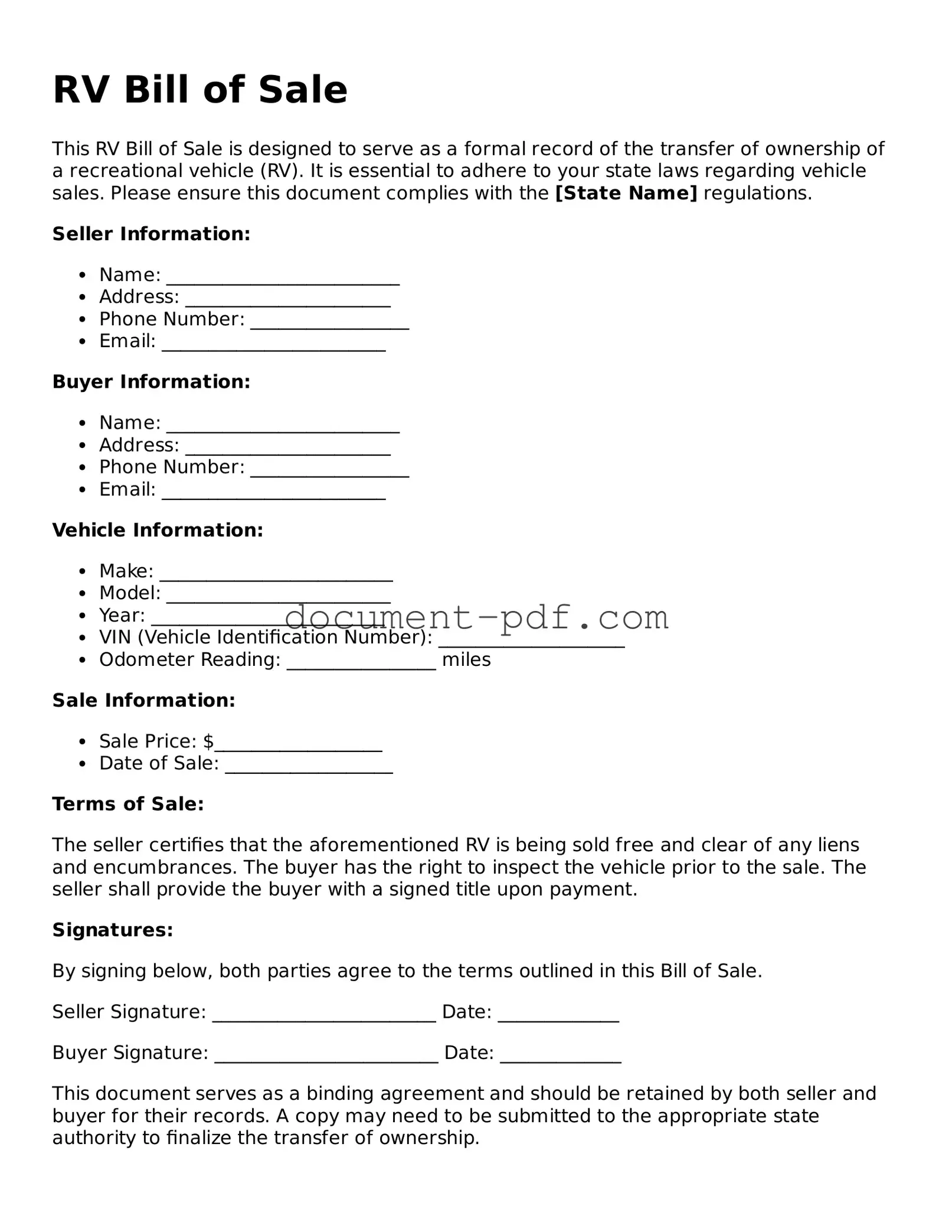The Vehicle Bill of Sale is similar to the Boat Bill of Sale, as both documents serve to transfer ownership of a vehicle or watercraft from one party to another. Each bill of sale includes essential information such as the names and addresses of the buyer and seller, a description of the item being sold, and the sale price. Both documents also provide a space for signatures, which is crucial for validating the transaction and ensuring that both parties agree to the terms outlined in the form.
To ensure your transactions are protected, it is wise to consider a comprehensive Hold Harmless Agreement that outlines the responsibilities and liabilities of all parties involved. You can learn more about this essential legal document by visiting this page on Hold Harmless Agreement.
Another document akin to the RV Bill of Sale is the Motorcycle Bill of Sale. This document operates under similar principles, detailing the transfer of ownership for motorcycles. Like the RV Bill of Sale, it includes pertinent information such as the vehicle identification number (VIN), make, model, and year of the motorcycle. The signatures of both parties confirm the agreement, making it legally binding and protecting the interests of both the buyer and seller.
The Trailer Bill of Sale shares similarities with the RV Bill of Sale as well. This document is used to transfer ownership of a trailer, whether it be for recreational use or commercial purposes. It includes similar details, such as the trailer's identification number, description, and sale price. Both documents require signatures to finalize the transaction and provide a record of ownership change, ensuring that the buyer has legal rights to the trailer.
The Car Bill of Sale is another document that resembles the RV Bill of Sale. It facilitates the transfer of ownership for motor vehicles. Both forms capture essential details like the vehicle's make, model, year, and VIN. They also outline the sale price and require signatures from both parties, ensuring that the transfer of ownership is documented and legally recognized.
A Home Bill of Sale, while different in context, shares the same purpose of documenting the sale of a significant asset. This document details the transaction between the buyer and seller of a home, including the purchase price, property description, and the parties involved. Like the RV Bill of Sale, it serves as proof of the transfer of ownership and requires signatures to validate the agreement.
Finally, the Firearm Bill of Sale is similar in function to the RV Bill of Sale, as it is used to document the sale of a firearm. This document includes information about the firearm, such as its make, model, and serial number, as well as the buyer's and seller's details. Both documents aim to protect the rights of both parties involved in the transaction and require signatures to confirm the agreement and transfer of ownership.
